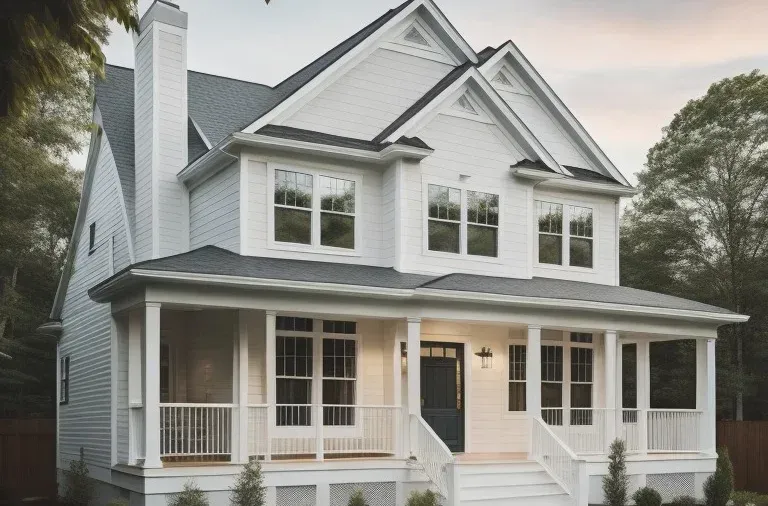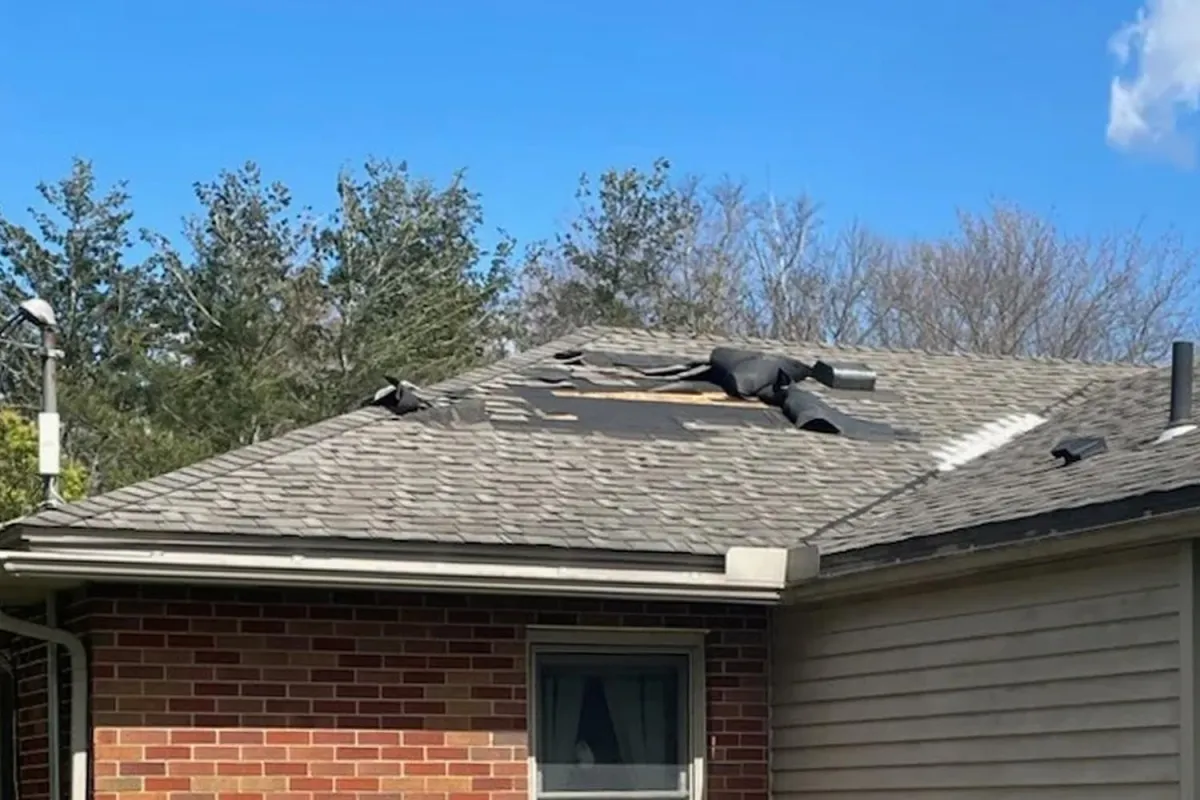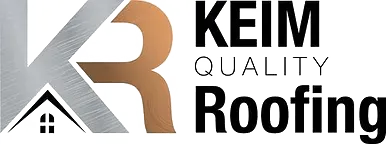Let Us Assist with Your Roof Repair or Replacement
About Us
Top Residential and Commercial Roofers in Ohio
As a family-owned roofing company, we take pride into everything that we do. At Keim Quality Roofing, we’ve built our company around providing the highest quality roofing services we can to homeowners and business owners in Northeast Ohio. You depend on your roof to protect yourself, your family, your employees, and your investments, and you can depend on us to build a roof that keeps all of those things secure. When we take on a job, we aren’t finished until our client is 100% satisfied with our work.

Affordable Pricing for New and Replacement Roofs
Discover cost-effective solutions for new roof installations and replacements. We offer competitive pricing without compromising on quality, ensuring your home receives a durable and reliable roof.

Roof Repairs for Hail and Storm Damage
Count on us for swift and effective repairs from hail and storm damage. Our expert team restores your roof's integrity, providing peace of mind and safeguarding your home against the elements.

Vinyl & Metal Exterior
Siding
Enhance your home or business's curb appeal with maintenance-free vinyl or metal exterior siding. Enjoy lasting beauty and durability without the hassle of upkeep, perfect for busy homeowners and business owners seeking quality.
WHAT DO WE OFFER?
Residential & Commercial Roofing
Your home or business needs a dependable roof with minimal upkeep to keep your property protected from the elements for years to come. Installing dependable, high-quality roofs is our specialty. We use Owens Corning Duration Shingles for all our asphalt shingle roofs ensuring you get nothing but the best quality shingles on the market today.

Roof Repair Services
Swift repairs restoring roof integrity, ensuring lasting protection against elements and wear.

Metal Roofing Solutions
Durable, weather-resistant metal roofs for long-term protection and energy efficiency.

Asphalt Roofing Systems
Cost-effective asphalt roofs combine durability with aesthetic appeal for residential properties.

Gutter Services
Seamless gutters and downspouts will provide improved protection from the elements.

Vinyl Siding
Enhance the beauty and protection of your home with our premium siding solutions.

Commercial Roofing Services
Comprehensive solutions for commercial roofs, prioritizing durability.

Mary Hayes
★★★★★
After 2 other bids, seeing a beautiful roof on our neighbors house I asked who they used! Keim Quality Roofing gave us the best price with quality materials. Jonathan is honest and stands by his word. Important in today’s world for us. It is really hard to trust anyone that you give money to up front and hope they return. Whatever KQR said, they did! If we didn’t like it, they changed it! They are driven to produce a pristine outcome. We are very happy with their work. Look for their name, don’t be confused with similar names, ask them for a quote. You won’t be sorry.

Roy Weaver
★★★★★
Great company to deal with. Prompt, courteous and professional. Our experience was totally satisfied!!

Lee Snyder
★★★★★
I worked with Jonathan on setting up this metal overlay for a rental when the weather was at its worst. He and his team were responsive and did a great job getting it scheduled and completing the project. It looks great too. Project included home and detached garage.

FAQs
Frequently Asked Questions
How to Determine if Your Roof Needs Replacement
Identifying the right time for a roof replacement involves recognizing several common indicators. Start by inspecting the interior of your home, as many roof issues first become evident in the attic. Armed with a flashlight, venture into your attic space to uncover any signs of water damage or openings in your ceiling. Also, keep an eye out for the following factors:
Shingle Condition: Assess the state of your roof's shingles. If you observe curling, cracking, or missing shingles, it's likely a sign of deteriorating roofing material.
Flashing Integrity: Examine the flashing around your chimney and vents. Damaged or deteriorating flashing can lead to water infiltration and subsequent issues.
Sagging Roof: Look for indications of roof sagging, which might result from rot damage. Addressing a sagging roof promptly is essential to prevent further structural damage.
Age of Roof: Consider the age of your roof. Over time, roofs endure the effects of sun exposure, rain, wind, hail, as well as the impact of trees and debris.
Weathering Effects: Roofs naturally weather from constant exposure to environmental elements, leading to gradual deterioration.
While inspecting attics and climbing onto roofs can be challenging, many homeowners opt to enlist the services of a professional roofing contractor. At Keim Quality Roofing, we are experts in assessing roofs and can help you make an informed decision regarding the need for a replacement.
Whats The Average Roof Lifespan in Ohio?
In Ohio's climate, the lifespan of roofs can vary depending on the roofing material. On average, asphalt shingle roofs typically last about 20-25 years. However, alternative roofing materials such as slate and metal can have significantly longer lifespans, often reaching up to 50 years due to their durability and resilience.
If you're considering replacing an asphalt shingle roof, Keim Quality Roofing offers appealing options. We provide roof replacement warranties that extend for 30 and even 50 years, offering you extended peace of mind and assurance. Feel free to reach out to our dedicated team for a more in-depth discussion of the details and benefits of these extended warranties for your roofing project. Your roof's longevity and protection are our top priorities.
How Do I Determine the cost of a New Roof?
Determining the cost of a new roof involves several variables, each of which can impact the overall price. These factors include:
1. Roof Size and Dimensions: The size and dimensions of your roof play a significant role in cost determination. Larger roofs naturally require more materials and labor, which can increase the overall cost.
2. Tear-Off vs. Overlay: If your existing roof needs a complete tear-off, where the old roofing materials are removed, it will typically cost more than overlaying a new roof over the existing one. Removing the old roof adds to the labor and disposal costs.
3. Roofing Materials: The choice of roofing materials greatly affects the cost. Asphalt shingles are often more affordable, while materials like metal, slate, or tile can be more expensive due to their durability and longevity.
4. Roof Pitch and Complexity: Steeper and more complex roof designs can be more labor-intensive, which can increase the overall cost.
5. Additional Features: The inclusion of features like skylights, chimneys, or roof vents can also impact the cost due to the added labor and materials required.
At Keim Quality Roofing, we understand that every roofing project is unique, and we consider all these factors when determining the cost of your new roof. Whether you're looking for an affordable solution or you want to invest in premium materials, we provide personalized quotes that align with your specific preferences and budget.
To get a more accurate estimate for your specific roofing project, we encourage you to contact us directly. Our knowledgeable team is ready to discuss your project in detail and provide you with a customized estimate. Our commitment is to transparency, ensuring that you have a clear understanding of the costs involved in achieving a secure and visually appealing new roof.
Deciding Between Roof Replacement and Roof Repairs
When faced with the decision between roof replacement and roof repairs, it's essential to consider several factors. Making an informed choice involves assessing various aspects of your roofing situation. Here are some key considerations to help you decide:
1. Age of Your Roof:
If your roof is approaching the end of its expected lifespan, it might be more cost-effective to choose a roof replacement rather than investing in frequent repairs.
2. Extent of Damage:
Consider the extent of the damage to your roof. Multiple leaks, missing shingles, or widespread wear and tear may make a roof replacement a more practical and lasting solution.
3. Safety and Longevity:
Roof replacement offers a longer-lasting and more reliable solution, enhancing the safety and value of your home.
4. Selling Your Home:
If you're planning to sell your home, a new roof can significantly improve its market value and appeal to potential buyers.
5. Investment Perspective:
While roof repairs might seem cost-effective in the short term, a roof replacement is often a better long-term investment, offering improved durability and reduced maintenance expenses. At Keim Quality Roofing, our team of experts can evaluate your specific situation and provide professional recommendations. We aim to provide you with a clear understanding of the advantages and disadvantages of both options, enabling you to make an educated choice based on your preferences, budget, and long-term objectives. If you're uncertain about whether a roof replacement or repairs are the right choice for your home, don't hesitate to reach out to our team for personalized advice. Your roofing satisfaction and the protection of your property are our top priorities.
Choosing Between a Complete Roof Tear-Off and Second Layer
When it comes to deciding between a complete roof tear-off and adding a second layer of roofing material, it's important to weigh the pros and cons of each option. Here's a breakdown to help you make an informed decision:
Complete Roof Tear-Off
Pros: Provides longer-lasting results. Enhances the overall value of your home. Allows for a thorough inspection of the roof deck. Potential repairs can be addressed before the new roof is installed. Allows for the use of fresh, top-quality materials.
Cons: May be more expensive upfront compared to adding a second layer.
Roof Over Existing Materials
Pros: Can be more budget-friendly in the short term as it avoids the costs of tearing off the old roof. The installation process is quicker.
Cons: Adds additional weight to your roof, potentially compromising its structural integrity. Hinders the identification and prevention of future leaks or issues. Has a shorter lifespan compared to a complete tear-off.
Will Insurance Cover The Cost Of A New Roof?
In some cases, homeowners insurance may cover the cost of a new roof, particularly if your home has suffered substantial damage from a sudden event such as a storm or another unforeseen accident. However, it's important to understand that general wear and tear or inadequate maintenance are typically not covered by insurance policies.
If you believe your situation may qualify for insurance coverage, the experts at Keim Quality Roofing are here to assist you. We can assess the specifics of your case, provide guidance on whether you meet the criteria for an insurance claim, and help you navigate the insurance claims process. Our goal is to ensure that you receive the support you need to address roofing issues resulting from unexpected events and protect your home. Feel free to reach out to our team for personalized assistance with your insurance-related roofing concerns.
Choosing the Ideal Roofing Material for Your Project
When it comes to choosing the ideal roofing material for your project, you have several options to consider, each with its own set of advantages and considerations. Here's a brief overview of some common roofing materials and their pros and cons:
Asphalt Shingles
Pros: Cost-effective, readily available, and relatively easy to install.
Cons: Typically have a shorter lifespan compared to certain other materials.
Premier Ribbed Metal Roofing
Pros: Offers durability, longevity, and a modern appearance. Ribbed metal panels can enhance structural integrity.
Cons: Generally comes with a higher upfront cost.
Standing Seam Metal Roofing
Pros: Provides exceptional durability, energy efficiency, and a sleek, contemporary look. Standing seams contribute to water-tightness.
Cons: Comes with a higher initial investment.
The choice of roofing material should be influenced by your preferences, budget, the architectural style of your home, and the local climate. Keim Quality Roofing's specialists are well-equipped to guide you through the material selection process, providing detailed insights into the benefits and potential drawbacks of each option. Our goal is to assist you in making an informed decision that aligns with your needs and aspirations for your roofing project. Please feel free to reach out to our team for further discussions and personalized recommendations. We are dedicated to helping you find the best roofing solution for your property.
Get all your questions answered!
Our Team

Jonathon Keim
Owner

Matt Keim
Owner

Quality roofing is our specialty.

